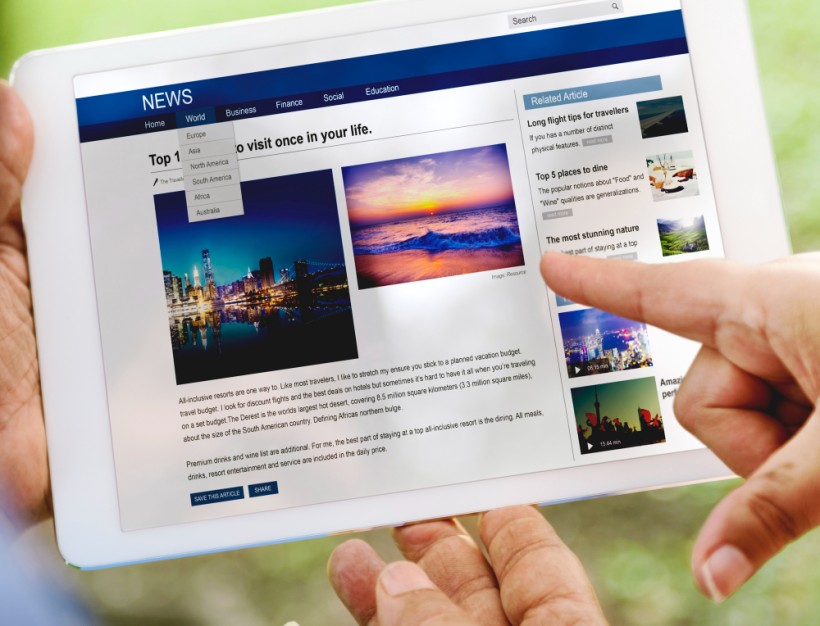In 2014, the ALS Ice Bucket Challenge flooded social media with videos of people dumping ice water on themselves. In just eight weeks, it raised over $220 million worldwide and funded breakthroughs in ALS research. Around the same time, Charity: Water refined its 100% model, pledging that every public donation funds clean water projects, and has since served more than 20 million people across 29 countries.
These examples show how creative communication can move millions. Just as commercial marketing promotes products, NGO marketing promotes purpose. Through strategy, emotion, and clarity, it helps people see a problem and believe they can help solve it.
Today, the global nonprofit sector manages over $500 billion in annual giving. Digital access has erased geography, allowing a small youth group in Nairobi or a health nonprofit in Lima to reach supporters across continents. In this connected landscape, what matters most is not size or location but strategy.
This article explores how NGOs can master marketing through a blend of emotional storytelling, data-driven strategy, and measurable impact.
Core principles of NGO marketing
Effective NGO marketing starts with a balance between heart and proof. People respond to empathy, but they also want to know that their support creates real change. Strong campaigns weave emotion and evidence, using stories to inspire and data to confirm impact.
This balance of feeling and reason keeps supporters engaged. For example, campaigns like Save the Children’s child sponsorships show how empathy builds connection, while GiveWell demonstrates how transparency and measurable outcomes earn trust. Emotion draws people in; information sustains their belief.
In mission-driven work, success means more than money raised. True return on effort comes through lives improved, policies changed, and communities strengthened. Fundraising totals matter, but outcomes define success.
Ethics also shape effective marketing. Imagery and language should protect dignity, avoid stereotypes, and meet privacy standards such as GDPR and CCPA. Above all, people should appear as active agents of change, not passive recipients of help.
When guided by these principles, NGO marketing grows from simple outreach into advocacy that earns lasting respect and support.
Understanding and Segmenting Your Audience for Better Engagement
NGOs reach many different groups like donors, volunteers, advocates, partners, and policymakers, and each group needs something different from the same message. Understanding these audiences is what turns communication into connection.
Segment your supporters. Broad appeals often miss the mark because they treat everyone the same. Instead, divide your audience into smaller, meaningful groups. Typical donor types include:
- Impulse givers who donate through quick links or text-to-give prompts.
- Major donors identified through screening tools like iWave, who need detailed evidence of impact.
- Legacy donors who include charities in their estate plans and value long-term trust and stability.
Beyond donors, NGOs also have advocates and volunteers. Some are slacktivists who engage through online petitions or quick actions, while others are super-volunteers who lead local chapters or campaigns. Both groups matter, but they respond to different forms of motivation.
Gather real insight. Tools such as Typeform or HubSpot’s free CRM can help collect data on supporter interests, preferred channels, and engagement patterns. This information allows you to personalise outreach, target messages more accurately, and improve donor retention.
Tailor your message. First-time donors might need emotional storytelling that shows immediate need, while long-term supporters want updates that prove results. Corporate partners expect evidence of brand alignment and measurable social value.
Segmentation turns marketing from broad broadcasting into targeted communication. When people feel seen and understood, they are far more likely to act, and stay engaged.
Creating a Strong NGO Digital Marketing Foundation
Every NGO needs a digital presence that works as well as its mission sounds. A solid foundation makes it easy for people to discover, trust, and support your cause.
- Start with your website. It should load quickly, work seamlessly on mobile devices, and make donating or signing up simple. Keep essential information like mission, impact, and calls to action, visible without scrolling. A clean layout and clear navigation help visitors focus on what matters most.
- Make it discoverable. Search visibility drives discovery. Programs like Google Ad Grants offer eligible nonprofits up to $10,000 per month in free advertising credit, helping them reach people already searching for related causes. Combine this with basic search engine optimization to appear in organic results for relevant terms.
- Measure performance. Use free analytics tools such as Google Analytics 4 to track engagement and understand where visitors come from and what they do on your site. Visualise data with Looker Studio dashboards to see which campaigns deliver results.
- Keep branding consistent. Your website, email templates, and social media should look and sound like one organisation. The same logo, colours, and tone build familiarity and signal professionalism.
- Build transparency into design. Donors and partners want to see where their support goes. Add an impact dashboard or progress bar that shows results in real time to strengthen credibility and prevent donor fatigue.
A well-built digital foundation works quietly in the background, turning curiosity into engagement and engagement into sustained support.
NGO Storytelling Strategies That Build Trust and Grow Support
People act when they feel something. In the noisy digital space where every cause competes for a moment’s attention, stories are what cut through. Facts persuade, but stories stick, they help audiences understand not just what your organisation does, but why it matters.
Strong storytelling starts with purpose. Every piece of communication should trace back to a clear reason for existing. This focus keeps messages coherent whether they appear in a ten-second reel or a five-minute video. A story anchored in “why” feels meaningful because it connects to something bigger than the activity itself.
Emotional truth is another essential element. The most memorable stories feature real people and genuine experiences, told with honesty and consent. The Hero’s Journey framework offers a simple model: the beneficiary becomes the hero, the donor plays the guide, and the NGO acts as mentor. This structure invites supporters to see their role in the story rather than simply observing it from the outside.
Modern storytelling also blends feeling with proof. A campaign may open with emotion but should close with evidence like how many families gained clean water, how much forest was restored, how many children returned to school. That mix of empathy and credibility turns interest into trust.
Format matters too. Short-form videos, interactive annual reports built with Shorthand, or user-generated content shared under hashtags all help audiences experience impact rather than just read about it. Regardless of format, tone should remain human, hopeful, and respectful. Images must protect dignity; words should never exploit pain.
Finally, good storytellers measure what resonates. Tracking engagement like views, shares, comments, and watch time, reveals which stories reach hearts and which fall flat. Attention is a finite resource, and treating it as something measurable ensures that every story moves the mission forward.
When storytelling is authentic, evidence-based, and emotionally grounded, it earns not just attention but lasting belief and support.
Using Influencer and Creator Partnerships to Expand Reach
Audiences today discover causes through the people they already follow. Working with influencers and content creators allows NGOs to reach supporters through familiar, trusted voices rather than formal campaigns. The key is authenticity, alignment in values matters more than audience size.
Micro-influencers often outperform celebrities because their followers see them as genuine. A creator with 20,000 loyal fans can drive more engagement than a larger account with little connection to the cause. For broad awareness events like #GivingTuesday, major influencers can help amplify reach when the message remains true to the mission.
Each platform plays a distinct role. TikTok, Instagram Reels, and short-form video spark emotional reactions quickly, YouTube offers space for deeper storytelling, and LinkedIn works best for professional or CSR-focused outreach. Choosing the right format ensures stories fit naturally within each space.
These partnerships don’t always require large budgets. Many creators collaborate pro bono or at reduced rates when they believe in the cause. NGOs can offer value through visibility, access to fieldwork, or opportunities to co-create authentic content.
Every collaboration must protect the dignity and privacy of those featured. Obtaining consent, avoiding stereotypes, and involving communities in the process ensures that storytelling remains respectful and accurate.
Fundraising Models and NGO Campaign Ideas That Drive Support
The way people give has evolved. Successful NGOs diversify how they raise funds to keep revenue stable year-round.
Recurring giving creates predictability. Small, consistent donations often generate more sustainable income than one-time appeals. Some platforms make this easy with “round-up” options at checkout through partners like PayPal or Change.org. Matching-gift programs, such as those offered through Salesforce.org, can double impact and motivate continued giving.
Peer-to-peer fundraising turns supporters into advocates. Tools like Facebook Fundraisers and virtual fitness events on Strava let donors create personal campaigns for birthdays, marathons, or challenges. This model works because people trust their friends more than formal appeals.
Corporate and foundation support strengthens long-term sustainability. Aligning with companies that share your mission can unlock sponsorships, in-kind donations, and co-branded initiatives. Tools such as Instrumentl and GrantStation help identify grant opportunities and deadlines.
Transparency is vital in every model. Donors want to see how funds are used and what outcomes follow. Publishing simple dashboards, progress bars, or field updates keeps engagement high and helps prevent donor fatigue.
Multichannel NGO Marketing Strategies That Deliver Consistent Results
Strong campaigns rarely live on one platform. It’s best to design stories that move across channels, each serving a different role but reinforcing the same message. The goal is not to be everywhere, but to create a consistent experience wherever supporters engage.
Social media remains the fastest route to attention. Short-form video drives engagement on TikTok, Instagram Reels, and Facebook, while X helps with real-time updates during campaigns or crises. LinkedIn suits professional storytelling and corporate partnership outreach. Coordinating tone and visuals across these spaces builds familiarity and trust.
Email marketing continues to outperform most channels for retention. Automated sequences — welcome notes, milestone updates, and thank-you messages — help sustain relationships over time. Platforms such as Mailchimp and Klaviyo let NGOs personalise messages and schedule follow-ups without extra staff time.
Paid media helps reach new audiences when organic visibility plateaus. Nonprofits can run targeted search ads through Google Ad Grants or use low-cost retargeting campaigns on Meta. Small A/B tests identify which messages or visuals convert best before scaling up.
Offline integration gives campaigns texture. Events, community radio, and public talks reinforce online messages and keep NGOs rooted in the real-world communities they serve.
Case studies highlight the power of this blend. Charity: Water pairs digital storytelling with on-the-ground transparency reports. 350.org built a global movement by combining WhatsApp networks with coordinated street actions. Both show that when digital and physical channels align, awareness turns into action.
How to Measure and Optimize NGO Marketing Performance
Good marketing doesn’t end when a campaign launches, it evolves through data. For NGOs, tracking outcomes involves learning what drives real change, not just what gets clicks.
- Set clear goals: Every campaign should define success before it begins. A goal like “increase monthly donors by 10% in three months” is more actionable than “grow support.” Framing targets this way helps teams focus and measure progress objectively.
- Track the right metrics: Think of two categories: attention metrics and impact metrics. Attention metrics include reach, impressions, engagement, and watch time — useful for gauging visibility. Impact metrics go deeper, measuring donations, volunteer sign-ups, or policy outcomes. Evaluating both shows whether your storytelling leads to action.
- Use accessible tools: Free options such as Google Analytics 4, Looker Studio, and UTM tracking links help visualise campaign data. Larger organisations can use enterprise systems like Blackbaud or EveryAction to integrate donor and marketing metrics in one place.
- Test and refine: Small experiments like A/B testing subject lines, video thumbnails, or landing-page layouts, reveal what resonates. Continuous improvement saves resources and increases conversions over time.
- Share what you learn: Publishing key performance insights in annual reports or dashboards builds transparency and trust. Donors and partners appreciate knowing how strategies evolve and what their contributions help achieve.
When NGOs treat data as feedback, they can adapt faster, communicate smarter, and grow stronger with each campaign.
The Heart of Effective NGO Marketing Is Trust, Not Tactics
People give to people, not institutions. When NGOs speak with honesty and conviction, they remind supporters that every act of attention can lead to real change.
Column helps NGOs and social-impact teams translate clarity into momentum by crafting digital stories, campaigns, and strategies that build credibility and inspire support. Get in touch to start shaping your next campaign.

Johnson is a Content Strategist at Column. He helps brands craft content that drives visibility and results. He studied Economics at the University of Ibadan and brings over years of experience in direct response marketing, combining strategy, creativity, and data-backed thinking.
Connect with him on LinkedIn.





